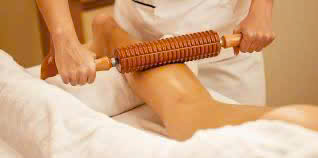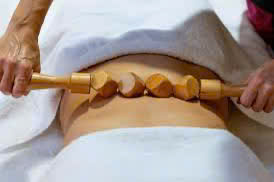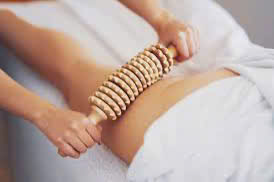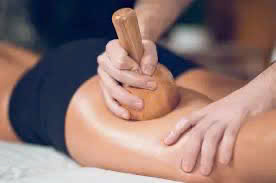Wood Therapy: Benefits, Techniques & How It Works for Belly Fat
Wood therapy has gained significant popularity as a natural and holistic approach to body contouring and wellness. This innovative technique involves the use of specially designed wooden tools to stimulate the body’s lymphatic system, promote fat reduction, and improve overall skin tone and texture. In this comprehensive guide, we will delve into what wood therapy truly entails, explore its numerous benefits, discuss various techniques, and understand how it works, especially focusing on how it can target belly fat effectively.

Wood therapy
Wood therapy is an ancient massage technique that has been modernized with the use of handcrafted wooden tools. Its resurgence in recent years is attributed to its effectiveness in shaping the body, reducing cellulite, and promoting relaxation. The core idea revolves around stimulating specific areas of the body to enhance circulation, lymphatic drainage, and fat metabolism. As a non-invasive treatment, it appeals to those seeking body sculpting without surgery or injections.
Understanding what is the wood therapy and how it integrates into wellness routines reveals its potential as both a cosmetic and health-promoting practice. Its applications extend beyond facial treatments to include targeted areas such as arms, thighs, buttocks, and notably, the abdomen. By applying pressure and rollings motions with specialized wooden tools, practitioners aim to break down fat deposits and improve skin elasticity.
The increasing popularity of wood therapy can be linked to the growing demand for organic, natural therapies that deliver visible results while minimizing side effects. Its versatility makes it accessible for different body types and skin conditions, making it a favored choice among beauty clinics and wellness centers worldwide.
Origins and Evolution of Wood Therapy
Modern wood therapy traces its origins back to traditional Chinese medicine and indigenous practices where wooden implements were used for healing and massage. Over centuries, these methods have been refined and adapted into contemporary aesthetics and wellness. Today, the use of smooth, ergonomically designed wooden tools allows for controlled pressure, consistent strokes, and efficient targeting of problem areas.

Why Choose Wood Therapy?
Many individuals opt for wood therapy because it is:
- Natural and free from chemicals or invasive procedures.
- Suitable for all skin types and ages.
- Offers immediate and progressive results.
- Promotes holistic well-being by reducing stress and enhancing circulation.
In sum, wood therapy represents a harmonious blend of tradition and innovation, emphasizing natural healing and aesthetic enhancement.
What is the wood therapy
What is the wood therapy? This question often arises among those considering alternative treatments for body shaping and wellness. Essentially, wood therapy is a manual massage technique that employs wooden tools crafted from various types of wood—like maple, bamboo, or oak—to perform massage-like manipulations aimed at improving body contours.
This therapy focuses on specific zones prone to stubborn fat accumulation, cellulite, and poor circulation. The process involves rolling, kneading, tapping, and scraping motions that stimulate the body’s lymphatic and circulatory systems, helping to eliminate toxins and excess fluids.
Unlike conventional massages, what is the wood therapy lies in its unique tools and targeted approach. Its efficacy depends significantly on the correct selection of wooden instruments, their shapes, sizes, and the pressure applied. These tools are designed to mimic the hand movements of traditional massage but with added precision and consistency.
How Does It Differ From Other Body Treatments?
While massage, cavitation, or radiofrequency treatments rely on electromagnetic energy or sound waves, what is the wood therapy offers a mechanical method that’s purely physical. This makes it especially appealing for clients who prefer organic and non-electrical options.
Scientific Perspective
From a scientific standpoint, wood therapy stimulates fibroblast activity, which promotes collagen production. Collagen is essential for skin elasticity, firmness, and youthful appearance. Moreover, the manual manipulation triggers the lymphatic system to eliminate waste and reduce swelling.
Practical Application
Practitioners typically customize sessions based on individual needs—focusing on cellulite, localized fat, or muscle tension. The duration varies but generally lasts between 30 to 60 minutes. Benefits compound over multiple sessions, leading to more noticeable body reshaping and skin improvements.
In summary, what is the wood therapy involves understanding it as a holistic, manual procedure utilizing specially crafted wooden tools that induce physiological and aesthetic changes through mechanical stimulation.

Top 10 benefits of wood therapy for well being
The appeal of wood therapy extends far beyond superficial body shaping. Its holistic benefits encompass physical, mental, and emotional well-being, contributing to a balanced lifestyle. Here are the top 10 benefits of wood therapy for well-being:
- Enhanced lymphatic drainage and detoxification
- Improved blood circulation and oxygen flow
- Reduction of cellulite and localized fat deposits
- Skin tightening and toning
- Alleviation of muscle tension and pain
- Reduction of fluid retention and swelling
- Promoting relaxation and stress relief
- Stimulating collagen and elastin production
- Supporting immune function through improved detox processes
- Boosting confidence and self-esteem
Holistic Health and Physical Benefits
One of the primary advantages is its capacity to facilitate detoxification. By stimulating the lymphatic system, wood therapy helps remove toxins from the body, which can lead to better immune function and overall vitality. Improved circulation not only enhances tissue oxygenation but also accelerates healing and reduces fatigue.
Skin Improvement and Anti-Aging Effects
The mechanical action encourages collagen synthesis, vital for maintaining skin elasticity, resilience, and youthful appearance. As collagen boosts, skin becomes firmer and more toned, diminishing the appearance of cellulite and sagging.
Emotional and Psychological Impact
Beyond physical improvements, wood therapy fosters a sense of relaxation. The rhythmic, soothing movements can decrease cortisol levels, combat anxiety, and elevate mood. Patients often report feeling rejuvenated physically and emotionally after sessions, illustrating its role in holistic wellness.
Long-term Wellness
Regular sessions can lead to sustained benefits such as permanent body reshaping, improved posture, and a healthier skin profile. It also encourages mindfulness and body awareness, integral components of overall well-being.
In essence, the top 10 benefits of wood therapy demonstrate its multifaceted contribution to health, beauty, and mental serenity, making it an attractive option for those seeking a natural approach to wellness.
Wood therapy :techniques
Wood therapy techniques encompass a variety of manual manipulations performed with wooden tools designed specifically for different therapeutic outcomes. Understanding these techniques provides insight into how practitioners tailor treatments for each individual while maximizing benefits.

Rolling and Kneading
One of the most common techniques, rolling involves moving the wooden tools along targeted areas with gentle to moderate pressure. This motion mimics deep tissue massage, breaking down fat deposits, stimulating blood flow, and encouraging lymphatic drainage. Kneading, on the other hand, involves squeezing and lifting the tissues to loosen fascia and improve mobility.
Tapping and Percussion
Using light taps with the wooden tools stimulates nerve endings, promoting relaxation and enhancing circulation. Percussion techniques involve rapid, rhythmic strikes that help in releasing muscle knots and improving lymph flow. This combination can be particularly effective for reducing muscle soreness and tension.
Scraping and Sweeping
Scraping involves using flat surfaces of the wooden tools to loosen fascia and mobilize subcutaneous fat. Sweeping motions follow the natural contours of the body, promoting lymphatic drainage and smoothing skin surface irregularities like cellulite. These techniques require precise control and are often customized to client needs.
Specific Tools and Their Uses
Different wooden tools are tailored for particular regions:
- Small rollers for delicate areas like the face or underarms
- Flat paddles for broad surface areas like the thighs or abdomen
- Cone-shaped tools for targeted work around stubborn fat pockets
- Ridges and textured tools designed for deeper tissue stimulation
Practitioners often combine these techniques in a comprehensive session, adjusting pressure and movement according to body response and treatment goals.
Technique Adaptation and Personalization
Successful wood therapy hinges on adapting techniques to individual needs. For example, someone aiming to reduce belly fat may benefit from circular rolling combined with scraping motions, while a client with tense muscles might need more tapping and kneading.
Training and experience play critical roles in mastering the nuances of these techniques, ensuring safety, comfort, and optimal results. Therapists learn to read tissue responses and modify pressure, speed, and tool usage accordingly.
In conclusion, mastering wood therapy techniques involves a deep understanding of manual manipulation, appropriate tool selection, and personalized application. When executed skillfully, these methods unlock the full potential of this natural therapy.
Uses
The versatility of wood therapy makes it applicable across various domains of health, beauty, and wellness. Its uses range from aesthetic enhancements to therapeutic interventions, addressing multiple concerns holistically.
Cosmetic and Body Contouring Uses
Most prominently, wood therapy is used for:
- Reducing cellulite and smoothing skin texture
- Contouring specific body parts like thighs, buttocks, and abdomen
- Enhancing skin elasticity and firmness
- Supporting post-liposuction recovery
These applications make it especially popular among clients seeking non-invasive alternatives to surgical procedures. It’s often incorporated into spa packages aiming for body slimming and toning.
Therapeutic Applications
Beyond aesthetics, wood therapy serves as a form of manual therapy for:
- Alleviating muscular tension and spasms
- Improving posture and musculoskeletal alignment
- Supporting lymphatic drainage and detoxification
- Reducing edema and fluid retention
In some holistic health protocols, wood therapy functions as an adjunct to physiotherapy, sports recovery, and even mental relaxation techniques.
Wellness and Relaxation
The calming nature of wood therapy also lends itself to stress reduction and relaxation practices. Its rhythmic movements induce parasympathetic nervous system activation, which lowers stress hormones and promotes mental clarity.
Sports and Rehabilitation
Athletes and physically active individuals utilize wood therapy for faster recovery, reduced muscle soreness, and improved flexibility. Its ability to stimulate blood flow and lymphatic drainage accelerates healing after intense training or injury.
Cosmetic Industry and Spa Settings
Given its natural approach, wood therapy is widely available in spas and wellness centers. It’s often combined with other treatments such as aromatherapy, massage, or skincare routines to enhance overall client satisfaction.
Future Potential Uses
Emerging research explores wood therapy as a complementary treatment for conditions like fibromyalgia, chronic pain, and skin aging. Its gentle yet targeted approach offers promise for broader therapeutic applications.
In summary, the multifaceted uses of wood therapy showcase its adaptability and effectiveness across beauty, health, and wellness sectors.
And how it works
Understanding how it works involves analyzing the physiological mechanisms triggered by wood therapy. It primarily operates through mechanical stimulation that influences biological processes at cellular levels, leading to tangible aesthetic and health benefits.
Mechanical Stimulation and Tissue Response
The core principle is that the manual manipulation with wooden tools exerts controlled pressure on tissues. This mechanical action stretches and compresses the fascia, stimulates blood vessels, and activates lymphatic channels. The cumulative effect enhances circulation, nutrient delivery, and waste removal.
Lymphatic Activation
One of the primary pathways wood therapy works through is lymphatic activation. The lymphatic system is responsible for removing toxins and excess fluids. Gentle, repetitive rolling and scraping motions encourage lymph flow, reducing swelling and promoting detoxification. This process is vital for reducing cellulite, which is partly caused by fluid retention.
Fat Breakdown and Metabolism
Although wood therapy doesn’t directly burn fat like liposuction, it facilitates fat breakdown by improving circulation and activating enzymes involved in lipolysis. The increased blood flow supplies oxygen and nutrients necessary for cellular repair and fat metabolism. Over time, consistent sessions can lead to a reduction in localized fat deposits and improved body contour.
Collagen and Elastin Stimulation
Repeated mechanical stimulation induces fibroblast activity, which synthesizes collagen and elastin—the key proteins responsible for skin firmness and elasticity. This biological response helps tighten loose skin and diminish sagging, especially after weight loss or pregnancy.
Nervous System Response
The rhythmic and soothing movements influence the nervous system by triggering parasympathetic responses, which promote relaxation, reduce cortisol levels, and support mental health. This holistic effect emphasizes the importance of how it works not just on the physical body but also on emotional well-being.
Scientific Evidence and Limitations
While anecdotal evidence supports wood therapy‘s effectiveness, scientific research remains limited. Most studies focus on manual lymphatic drainage or massage therapy rather than wood therapy specifically. Nonetheless, the combination of mechanical stimulation with holistic benefits makes how it works a compelling explanation for its popularity.
In conclusion, how it works intricately combines physical manipulation, biological responses, and systemic effects to provide a natural, non-invasive approach to body shaping and wellness.
How it works for belly fat
Targeting belly fat with wood therapy is one of its most sought-after applications. This region tends to accumulate stubborn fat due to hormonal, genetic, and lifestyle factors, making it challenging to treat with diet and exercise alone. Understanding how it works for belly fat requires examining the specific mechanisms and treatment strategies involved.
Targeted Mechanical Stimulation
The process involves using specific wood therapy tools designed for abdominal contours—such as flat paddles, small rollers, and scraping tools. Practitioners focus on creating rhythmic movements that increase local blood circulation, break down adipose tissue, and stimulate lymphatic flow within the abdominal area.
Breaking Down Fat Deposits
While wood therapy does not directly melt fat like laser or ultrasound treatments, the mechanical action helps to loosen fat deposits embedded under the skin. Repeated rolling and scraping stimulate enzymatic activity involved in lipolysis, facilitating gradual fat reduction. The process also disrupts fibrous septae—connective tissues that contribute to cellulite and unevenness—resulting in smoother skin.
Lymphatic Drainage for Belly Fat
A significant aspect of how it works for belly fat is promoting lymphatic drainage. Excess fluids and toxins can hinder fat metabolism and cause bloating. By enhancing lymph flow, wood therapy helps reduce water retention and inflammation, making the abdomen appear flatter and more toned.
Skin Tightening and Elasticity
As the treatment encourages collagen synthesis, the skin overlying the belly becomes firmer and more elastic. This effect combats sagging that might occur after weight loss, giving a more contoured appearance.
Lifestyle and Complementary Measures
For optimal results, how it works for belly fat is complemented by a healthy diet, hydration, and regular exercise. The therapy acts as an accelerator, enhancing the body’s natural fat-burning and detoxifying capabilities.
Realistic Expectations and Limitations
It’s crucial to note that wood therapy is most effective for mild to moderate fat deposits and cellulite. It isn’t a substitute for surgical options like liposuction but offers a non-invasive alternative with minimal downtime. Success depends on consistency, treatment frequency, and individual body response.
In essence, how it works for belly fat involves a synergistic combination of mechanical manipulation, enhanced metabolic processes, and improved lymphatic drainage, leading to gradual but noticeable body sculpting results.https://maps.app.goo.gl/2gfYPJNYythhZesU6?g_st=com.google.maps.preview.copy
Conclusion
Wood therapy stands out as a natural, versatile, and effective approach to enhancing both physical appearance and overall well-being. Its techniques harness the power of handcrafted wooden tools to stimulate circulation, lymphatic drainage, and collagen production, resulting in reduced cellulite, tighter skin, and targeted fat reduction—particularly in challenging areas like the belly. Beyond aesthetics, wood therapy offers profound health benefits by promoting detoxification, relaxation, and muscular relief. While it complements traditional weight management strategies, its true strength lies in its holistic approach to wellness—making it a valuable addition to anyone seeking a non-invasive, restorative, and organic path toward body harmony and vitality.https://jobedubaispa.com/jacuzzi-bath-and-massage/
